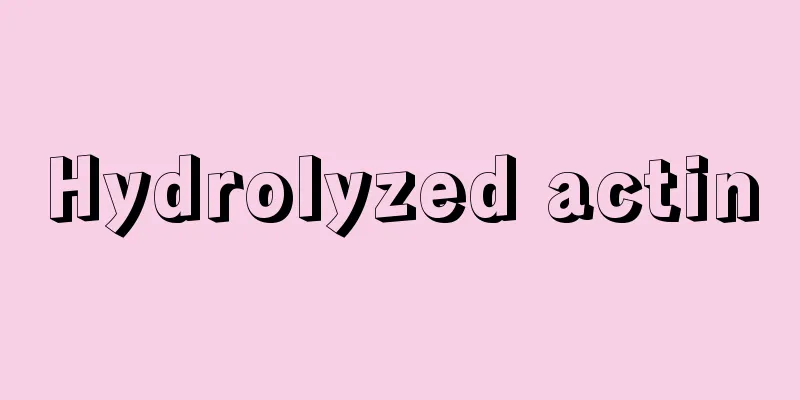Hydrolyzed actin

|
All cells, tissues and organs in our body are made up of proteins, and various types of proteins play different functions. In order to compensate for or enhance the function of a certain protein, people will obtain the corresponding protein through acquired supplements. Collagen is a typical example, and the same is true for hydrolyzed actin. So, what are the effects of actin hydrolysis? Actin is a medium-sized protein consisting of 375 amino acid residues and is encoded by a large, highly conserved gene. It exists in two forms, monomers and polymers. The monomeric actin is a spherical molecule composed of a polypeptide chain, also known as globular actin (G-actin), and its appearance is similar to that of a peanut. Actin polymers form actin filaments, called fibros actin (F-actin). Under an electron microscope, F-actin is a double helix with a diameter of 8nm and a distance between helices of 37nm. Actin is the most abundant protein in eukaryotic cells. In muscle cells, actin accounts for 10% of the total protein, and even in non-muscle cells, actin accounts for 1-5% of the total cell protein. effect Actin is a medium-sized protein consisting of 375 amino acid residues and is encoded by a large, highly conserved gene. The molecular weight of a monomeric actin molecule is 43 kDa, and it has three binding sites. One is the ATP binding site, and the other two are binding sites for actin-binding proteins. Actin is expressed in at least six isomeric forms, which are divided into three types: α, β, and γ. Actin in higher animal cells can be divided into three categories according to different isoelectric points. α is distributed in various muscle cells, β and γ are distributed in muscle cells and non-muscle cells. There are three alpha actins (skeletal, cardiac, and smooth muscle), one beta actin, and two gamma actins (gamma smooth muscle and gamma non-smooth muscle). Eukaryotic cells require networks of actin fibers to control and maintain their morphology and internal structure, and the first step in the formation of these networks is the nucleation of new actin fibers. Multiple cellular factors have the ability to form new actin fibers, and each factor can form a specific network. The best-studied of these is the actin-related protein 2/3 complex (Arp2/3), which forms networks by recruiting new fibers around pre-existing fibers. To generate motility and move the cell membrane, Arp2/3 requires the assistance of other proteins, including capping protein (CP). Capping proteins are important components of the nucleated Arp2/3 network, the actin network that drives motility. Traditional theory holds that rapid movement requires rapid growth of actin fibers, and therefore CP can increase the concentration of steady-state actin monomers by capping the rapidly growing hook ends of most actin fibers in the cell. The increased monomer concentration can cause the remaining small amount of uncapped actin filaments to extend more rapidly, resulting in faster movement. However, the above theory has never been verified experimentally. |
<<: The latest recruitment information for roast duck chef
>>: The role of hydrolyzed collagen
Recommend
Can adults use the children's fever-reducing patch?
Colds and fevers are common diseases. If the feve...
Is there any effect after applying water light?
In recent years, the cosmetic surgery industry ha...
What items should be checked during the 33-week prenatal check-up?
At 33 weeks of pregnancy, it has entered the late...
Can femtosecond laser cure astigmatism?
If a person has problems with myopia and astigmat...
Can salt reduce inflammation and swelling?
Eating salt by itself cannot reduce inflammation ...
At what age do children start learning to walk?
Parents all hope that their children will grow up...
What are the ways to prevent obsessive-compulsive disorder
I believe that many people will have this situati...
How to treat diffuse liver cancer effectively? Introducing the method of local ablation to treat liver cancer
What is the best treatment for diffuse liver canc...
MRI Diagnosis of Chondromyxoid Fibroma
Chondromyxoid fibroma originates from cartilage c...
Cryotherapy for common warts
Before common warts occur, they will destroy your...
The effects and hazards of nitric oxide
As we grow older, much of the knowledge we have l...
What to do if glass is swallowed
In daily life, parents should pay attention to ta...
Can salt water remove formaldehyde?
Nowadays, even people who don’t buy houses know t...
Is Yunnan Baiyao effective in treating urticaria?
Yunnan Baiyao is a very well-known medicine, whic...
Which is the best hospital for rectal cancer treatment
After falling ill, patients will entrust themselv...









